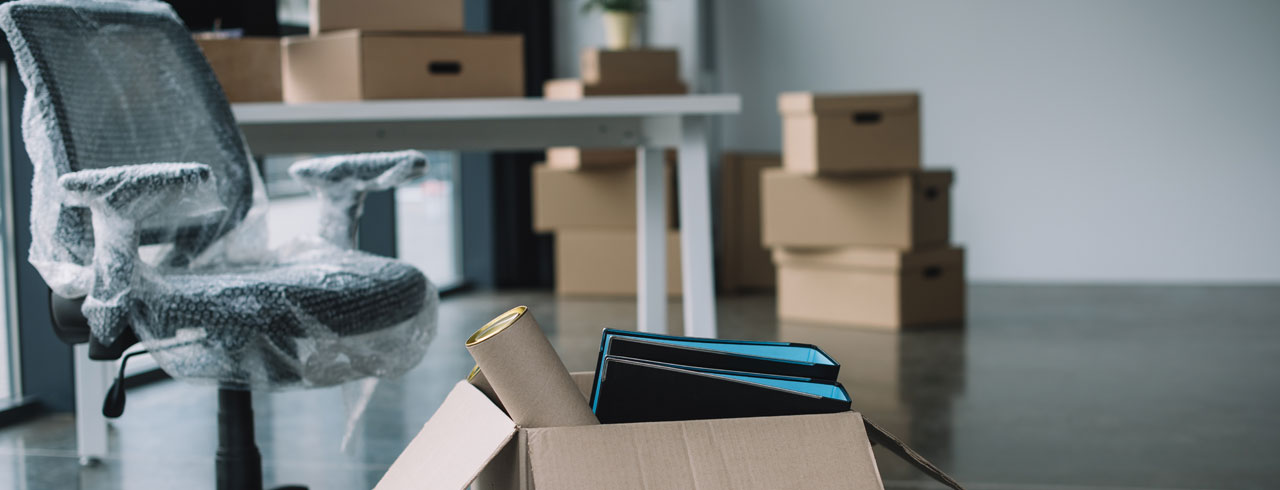If you have ever participated in an office relocation, you know it can be a chaotic and stressful process. Not only are there the countless details that must be attended to, the move typically must be completed in a short period of time so that the business can return to normal operations quickly.
Any mistakes can lead to costly downtime. They can also damage your reputation with customers and hurt your chances of landing new business. So, the stakes are high. But if you plan and execute your office relocation carefully and methodically, there is no reason it cannot take place in a smooth and efficient manner.
Understanding the Office Moving Process
Regardless of the size of your company and the complexity of your relocation, the moving process always has the same key phases:
- Packaging. This involves wrapping, bagging and cushioning items in preparation for putting them into a container. Electronics require special attention here, as they are easily damaged and may have to be placed or wrapped in anti-static materials for added protection.
- Crating. Larger items may have to be placed in wood crates or corrugated boxes, especially if they will be traveling long distances. And for unusually shaped items, custom-designed containers are ideal.
- Shipping. Whether items are being sent across town or around the world, attentive coordination of their transport is a must. Losing track of even one crucial asset can bring an office to a standstill until it is found or replaced.
Completing each phase fully and properly is the best way to ensure that a move goes smoothly.

Your Office Moving & Relocation Checklist
When working on office relocations with businesses all over the world, we encourage them to take these steps:
- Plan your move well in advance. Waiting until the last minute to produce or finalize a strategy is often the cause of mistakes in an office relocation. Companies that take the time to develop a plan and review it multiple times before moving day are rewarded with easy, uneventful moves.
- Choose a “move manager” to oversee the process. While many people will play crucial roles in your office relocation, it is a good idea to have a point person whose job it is to see the “big picture” and ensure that nothing is overlooked. The specialty crating, packaging and shipping company you work with will play a pivotal role in coordinating the move, as well, but you should have someone on your team that they can work closely with.
- Find the right office relocation experts. The crating, packaging and shipping company you choose can play a major role in the success of your move. Do your research and find an organization with extensive experience that can be a partner in your move rather than just a service provider. It can also be helpful to work with a company that can insure your office equipment and furniture. Your insurance company may provide that coverage as well. Just be sure that you have adequate financial protection.
- Communicate early and often with your employees. It is a common mistake to assume that everyone in your company is on the same page about a move. Often, there are people who are focused on other things and not fully up to speed on what is expected of them and the timeline for the move. Be sure to share your plan and update your employees on progress as you execute it.
- Pay special attention to your IT requirements. In today’s digital world, most businesses cannot function without their computer network and internet access. If the coffeemaker is accidentally left behind, there are workarounds. If employees are not able to access files or send emails, that is a more serious problem.
- Understand your move out/in responsibilities. Both your existing and new landlords likely have requirements you must meet before you move out of the current space and into the new one—things like cleaning your current office or arranging for the services you need at the new location. Review what those are so you are not caught off guard on or after moving day.
- Put in change-of-address orders. Be sure that anyone who sends or ships things to your current address—the USPS, customers, vendors, etc.—knows when and where you are moving. You do not want your mail or supplies to get lost in the shuffle.
- Assign personal and group tasks. Ideally, each employee should be responsible for preparing the items in their work area for shipping following guidelines you provide. They should also be assigned larger, group tasks in areas beyond their workspace, such as helping to prep and pack items in the breakroom or conference rooms.
- Label every item. It is important to label assets in a way that indicates what the item is and where it belongs in the new office. This ensures that you can unpack, get organized and resume operations quickly. “We’ll just figure it out when we get there.” is not an effective strategy.
- Move non-essential assets in advance if possible. If you have access to your new space before moving day and can take over items that aren’t needed for day-to-day operations, that can be very helpful. The more tasks you can check off your list in advance, the better.
- Keep the lines of communication open on moving day. Even with the most detailed of office relocation plans, issues come up that must be dealt with “on-the-fly.” Be sure everyone knows who to contact with what types of questions.
- Express your appreciation after your successful move. Office relocations are labor-intensive projects, and change, in general, can be stressful. Once you are operational in your new space, be sure to celebrate the accomplishment and recognize the efforts of your employees.


Make Your Office Relocation a Success
Whatever you need to move—desks, chairs, bookshelves, credenzas, filing cabinets, copiers, large printers, computer terminals, telecommunication equipment, computer servers—proper planning and working with a skilled and experienced crating, packaging and shipping company are the keys to success!

